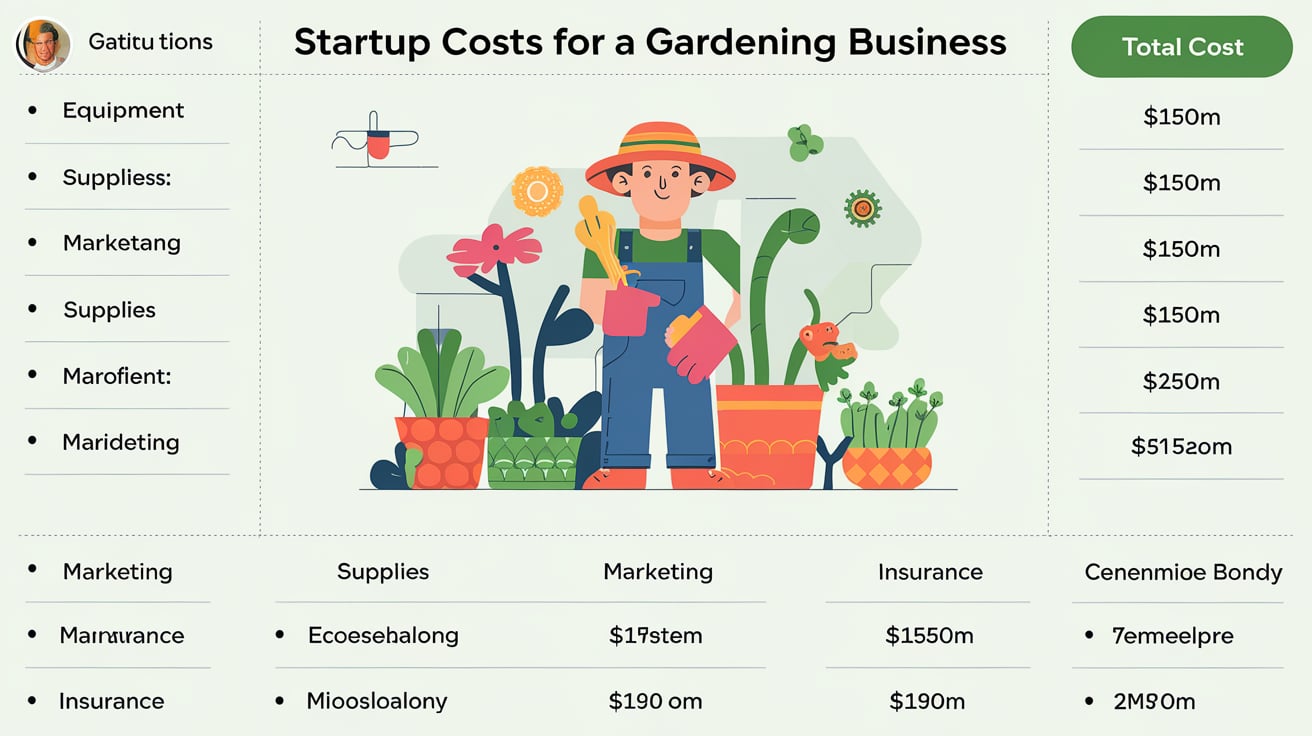As a Business and Investment Specialist with over 15 years of experience, I have witnessed firsthand the pivotal role that understanding different business models plays in the success of enterprises. Today, I am excited to shed light on the intricacies of seven dynamic business models that are shaping industries worldwide. Choosing the right business model is not merely a decision but a strategic imperative—a cornerstone that can either propel an organization to prosperity or hinder its growth potential.
In our fast-paced economic landscape, grasping the nuances of diverse business models is akin to wielding a compass in uncharted territories. Each model offers a unique blueprint for organizational operations, revenue generation, and customer engagement.
From the well-oiled machinery of franchising to the digital frontiers of e-commerce and subscription-based services, the selection of a business model not only defines how we interact with consumers but also influences our positioning within competitive markets.

Whether you are an aspiring entrepreneur seeking clarity or an established small business owner exploring avenues for expansion, deciphering these seven types of business structures holds transformative power in navigating today’s entrepreneurial ecosystem effectively. Join me as we embark on this illuminating journey into the realms of contemporary commerce—unveiling the very essence of what sets businesses apart in our modern world.
Types of Business Models.
Let’s delve into the various types of business models prevalent in today’s dynamic market landscape. The first model we’ll explore is the Franchise Business Model, renowned for its scalability and brand recognition.
Think about industry giants like McDonald’s and Starbucks – they have successfully utilized this model to expand their presence globally. While the franchise model offers established processes and support, entrepreneurs need to be aware of the significant upfront costs and ongoing royalties associated with it.
Moving on, we encounter the Subscription-Based Business Model, characterized by recurring revenue streams from loyal customers. Companies like Netflix and Spotify have revolutionized entertainment consumption through subscription services. As a business owner considering this model, remember that reliable content or products are essential for retaining subscribers amidst increasing competition in the market.
Next up is the E-commerce Business Model, exemplified by e-retail giants such as Amazon, Alibaba, and eBay. E-commerce provides an unparalleled platform for reaching a vast customer base but requires robust logistics and online marketing strategies for sustained success. Entrepreneurs venturing into e-commerce must prioritize user experience and secure payment gateways to build trust with their online audience.

Marketplace Business Models like Airbnb and Etsy facilitate transactions between buyers and sellers on platforms that offer diverse products or services. Operating such a business demands effective moderation to ensure quality standards are upheld while balancing the needs of both parties involved.
Aspiring marketplace entrepreneurs should focus on building a strong community and implementing transparent policies for seamless interactions.
These varied business models offer distinct opportunities and challenges based on individual goals and market conditions. By understanding these models thoroughly, entrepreneurs can make informed decisions aligned with their vision for growth within their respective industries.
Each model presents unique benefits that can propel businesses forward when executed strategically in response to evolving consumer preferences and technological advancements.
Franchise Business Model.
As a seasoned Business and Investment Specialist, I can attest to the power of the franchise business model in today’s market landscape. Franchising involves granting an individual or group the right to operate a company’s business model and sell its products or services within a specific territory.
One of the key characteristics of this model is that it offers entrepreneurs a proven business concept with established branding, operational processes, and marketing strategies. This can significantly reduce the risks associated with starting a new venture.
When we think of successful franchises, iconic names like McDonald’s and Starbucks immediately come to mind. These industry giants have perfected their franchising systems, allowing them to expand globally while maintaining consistency in customer experience.

The advantage of choosing a franchise model lies in the ready-made support and training provided by the franchisor, enabling franchisees to hit the ground running. However, one must also consider the potential drawbacks such as high initial investment costs and ongoing royalty fees which can impact profitability.
In my years of experience, I have seen many entrepreneurs thrive by selecting the right franchise opportunity that aligns with their goals and interests. Conducting thorough research, evaluating financial projections, and understanding the terms of the franchise agreement are crucial steps when considering this business model.
It is essential to weigh the pros – such as brand recognition and established customer base – against the cons – like limited autonomy and financial obligations – before committing to a franchise. By making an informed decision based on your unique circumstances, you can harness the success potential that comes with operating under a well-established brand.
Subscription-Based Business Model: Navigating Recurring Revenue Streams
In the realm of business models today, the subscription-based model stands tall as a manifestation of evolving consumer preferences and technological advancements.
As a Business and Investment Specialist with years in the field, I have witnessed how this model functions seamlessly, providing companies with predictable revenue streams while offering customers convenience and personalized experiences. Subscriptions work by charging customers regularly for access to products or services, creating a steady income flow for businesses.
Two standout illustrations of successful subscription-based businesses are Netflix and Spotify. These industry giants have revolutionized entertainment consumption through their subscription services, catering to diverse audience preferences effortlessly.

Netflix disrupted traditional TV viewing with its on-demand streaming service, while Spotify revolutionized the music industry by offering unlimited music access at the tap of a screen. Their success underscores the power of subscriptions in building customer loyalty and engagement.
While subscription-based models offer numerous advantages such as recurring revenue, enhanced customer relationships, and better predictability, they also present challenges that require strategic navigation. Companies need to continuously deliver value to justify ongoing subscriptions and retain customers in a competitive landscape.
Balancing pricing strategies to align value with cost is key, ensuring that subscribers feel they are getting their money’s worth. Moreover, managing churn rates and addressing customer needs promptly are crucial for sustaining long-term success in this model.
By understanding the dynamics of subscription-based business models through real-world examples like Netflix and Spotify, entrepreneurs can leverage this approach effectively to drive growth and forge lasting connections with their target market.
As businesses embrace the era of recurring revenue streams, embracing innovation and agility will be essential for thriving in an ever-changing marketplace shaped by evolving consumer demands.
E-commerce Business Model.
As a Business and Investment Specialist with over 15 years of experience, I understand the dynamic landscape of e-commerce as a prominent business model in today’s market. E-commerce, or electronic commerce, involves selling products and services online through websites or platforms.
Giants like Amazon, Alibaba, and eBay have revolutionized this model, each with its unique approach that showcases the versatility within e-commerce. For example, Amazon focuses on fast shipping and customer convenience through its Prime membership program, while Alibaba connects buyers and sellers globally.
The advantages of an e-commerce business model are evident – it allows for broader reach to customers beyond geographical limits, operates 24/7 without constraints of physical store hours, and provides valuable data for targeted marketing strategies.

However, pitfalls such as intense competition, cybersecurity threats, and dependency on third-party delivery services can pose challenges for e-commerce entrepreneurs. It is crucial for businesses operating in the e-commerce sphere to stay updated on technological advancements to enhance user experience and security measures to build trust with their online customers.
In my years of working with various businesses, I have seen firsthand how those embracing e-commerce effectively leverage social media platforms for marketing campaigns that resonate with their target audience.
Additionally, implementing personalized shopping experiences through data analytics has proven beneficial in driving sales and customer retention. To thrive in the ever-evolving e-commerce landscape, staying agile in response to market trends while prioritizing cybersecurity measures will be key to sustained success.
Marketplace Business Model: Facilitating Connections and Transactions.
As a Business and Investment Specialist with years of experience, I understand the essence of the marketplace business model. Marketplaces serve as platforms where buyers and sellers come together to exchange goods or services.
Think of companies like Airbnb, connecting travelers with unique accommodation options, or Etsy, providing artisans a global platform to showcase their crafts. These platforms operate by facilitating transactions between multiple parties, earning revenue through commissions or fees on successful deals.
When considering establishing or participating in marketplace businesses, key considerations should be at the forefront. Firstly, building trust among users is paramount. Maintaining a transparent and secure environment fosters confidence and encourages repeated interactions.

Additionally, scalability is crucial for marketplace models; ensuring the platform can handle growth without sacrificing user experience is vital for long-term success. Understanding the needs of both suppliers and consumers is fundamental in creating a balanced ecosystem that benefits all participants.
Drawing from personal experiences in analyzing market trends and consumer behavior, it’s evident that marketplace models offer immense potential for innovation and growth.
By studying successful examples like Airbnb or Etsy, one can glean insights into how effective matchmaking algorithms and user-friendly interfaces contribute to overall success. Embracing technological advancements while prioritizing seamless user experiences can set marketplace businesses apart in today’s competitive landscape.
Freemium Business Model: Balancing Value and Revenue.
As a seasoned business specialist, I have observed the rising popularity of the freemium business model in today’s competitive landscape. Freemium is not just a pricing strategy but a delicate balance between offering free basic services to all users while enticing customers with premium features at a cost. Companies like Dropbox and LinkedIn have effectively leveraged this model to draw in users with complimentary services and then encourage upgrades to unlock advanced functionalities.
The freemium model presents distinct advantages such as widening customer reach, fostering brand loyalty through initial free offerings, and capturing potential revenue from premium upgrades. However, it also comes with challenges like determining the right features for free users that still add value without compromising paid subscriptions.

Strategies for successful implementation involve careful segmentation of user needs, clear communication on upgrade benefits, and continuous innovation to maintain user interest in premium offerings.
In my years of experience, I have seen how companies navigate the complexities of the freemium model by constantly refining their product offerings based on user feedback and market trends. By striking the right balance between free and premium services, businesses can not only attract a broader audience but also ensure sustainable revenue streams in an ever-evolving business environment.
SaaS (Software as a Service) Business Model.
The Software as a Service (SaaS) business model offers software solutions through a subscription-based service, making technology more accessible and cost-effective for businesses. As a SaaS provider, we develop and host applications centrally, allowing users to access them over the internet on a pay-as-you-go basis. Companies like Salesforce and Slack have excelled in the SaaS industry by providing innovative solutions that cater to specific business needs with scalability and flexibility.
Success stories from pioneers in the SaaS industry showcase how this model has revolutionized software delivery. For instance, Salesforce disrupted traditional CRM systems by offering cloud-based solutions that enhance customer relationship management and sales processes.
Similarly, Slack transformed communication in the workplace with its collaborative platform, improving productivity and team connectivity. These examples demonstrate the adaptability of SaaS to various sectors and highlight its potential for driving organizational efficiency.

Despite its advantages, SaaS businesses encounter challenges related to scalability and customer retention. Managing rapid growth while ensuring consistent service quality can be demanding. Additionally, retaining customers in a competitive market requires continuous innovation, personalized experiences, and responsive support services.
Overcoming these challenges involves strategic planning, agile development methodologies, proactive customer engagement, and leveraging data analytics to drive decision-making. By addressing scalability issues effectively and prioritizing customer satisfaction, SaaS companies can sustain long-term success in the dynamic tech landscape.
Direct Sales Business Model.
The direct sales business model involves selling products or services directly to consumers outside of a traditional retail setting. Companies utilizing this approach, such as Avon and Amway, often rely on independent sales representatives to market products directly to customers through one-on-one interactions or hosted events.
This personalized approach allows for a more tailored sales experience and enables representatives to build lasting relationships with their clientele.
One key feature of the direct sales model is its emphasis on individual entrepreneurship. Independent sales representatives have the opportunity to run their own businesses, set their own schedules, and potentially earn income based on their sales performance.

This aspect appeals to individuals seeking flexibility and autonomy in their work while also benefiting from established product lines and support from the parent company.
Despite its advantages, direct selling firms face challenges related to reputation management. Ensuring that representatives adhere to ethical business practices, accurately represent products, and provide excellent customer service is crucial for maintaining a positive brand image.
Furthermore, navigating issues related to regulatory compliance and addressing any misconceptions about the industry are essential aspects of managing reputation in the competitive direct sales landscape.
In my years of experience as a business and investment specialist, I have witnessed how direct selling can be a powerful business model when executed effectively. By understanding the unique features of this model, addressing reputation management proactively, and providing continuous support and training to independent representatives, companies can harness the potential of direct sales for sustainable growth and success in today’s dynamic marketplace.
Choosing Your Path to Success: A Recap of the 7 Business Models.
In unveiling the intricacies of the seven types of business models, it becomes evident that each model offers a unique framework for success. From the established franchise model exemplified by industry giants like McDonald’s and Starbucks to the innovative subscription-based model demonstrated by companies such as Netflix and Spotify, the world of business abounds with diversity and opportunity.
E-commerce platforms like Amazon and Alibaba have reshaped consumer habits, while marketplace businesses like Airbnb and Etsy connect buyers and sellers worldwide. The freemium approach adopted by Dropbox and LinkedIn entices customers with free services while offering premium features, illustrating a balance between value and revenue.

Software as a Service (SaaS) ventures like Salesforce and Slack thrive in providing scalable solutions but face challenges in retaining clientele.
Amidst this landscape, direct sales firms like Avon and Amway embrace personal connections despite grappling with reputation management hurdles. As entrepreneurs, small business owners, or ambitious students exploring pathways to success, understanding these varied business models is paramount.
Deciphering which model aligns best with one’s goals and market trends is not merely a choice but a strategic imperative for sustainable growth and relevance in today’s competitive environment.
Whether embarking on franchising adventures, venturing into digital realms through e-commerce or SaaS endeavors, or embracing direct sales opportunities, selecting an appropriate business model paves the way for a flourishing future. Each path offers distinct challenges but presents unique rewards centered around value creation, customer engagement, innovation, and market adaptability.

In conclusion, as I reflect on my 15 years of experience in business strategy and investment guidance as Sarah Shane—a Business and Investment Specialist—the foundational lesson remains clear: choosing your path wisely among these diverse business models serves as the cornerstone for success in both established markets and emerging landscapes.
By harnessing insights from successful examples within each model category discussed in this article, individuals can craft strategic roadmaps tailored to their aspirations. In embracing change, fostering creativity, cultivating customer-centric approaches grounded in market realities—entrepreneurs will carve out niches that resonate powerfully with audiences’ needs.
So go forth confidently armed with knowledge about these seven dynamic business models; may your journey be marked by prosperity built upon informed decisions.
As an author writing and creating business courses and articles, I am responsible for developing and delivering high-quality content that is informative, engaging, and relevant to the target audience.
I monitor and analyzes business trends and topics to create courses and articles that provide value to readers and students here. I am responsible for ensuring that all content is accurate, well-written, and met the needs of the target audience.






